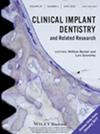Submucosal Microbiome Profiles in Paired and Unpaired Samples From Healthy and Peri-Implantitis Dental Implants
Abstract
Background
This cross-sectional study aimed to compare the composition of the submucosal microbiome of peri-implantitis with paired and unpaired healthy implant samples.
Methods
We evaluated submucosal plaque samples obtained in 39 cases, including 13 cases of peri-implantitis, 13 cases involving healthy implants from the same patient (paired samples), and 13 cases involving healthy implants from different individuals (unpaired samples). The patients were evaluated using next-generation genomic sequencing (Illumina) based on 16S rRNA gene amplification. The sequences were grouped according to the amplicon sequence variant (ASV) to define the taxonomic categories. Alpha diversity was analyzed using Shannon's and Simpson's indices, while beta diversity was evaluated using principal coordinate analysis, analysis of similarities, and permutational multivariate variance analysis. Additionally, UniFrac distances were evaluated using Quantitative Insights into Microbial Ecology 2. Finally, we evaluated between-group differences in the taxonomic components.
Results
There were no significant between-group differences in alpha diversity. The average bacterial ratios of Filifactor alocis, Porphyromona endodontalis, Tannerella forsythia, Treponema denticola, Peptostreptococcaceae [Eubacterium nodatum], Desulfobulbus sp. HTM 041, and Mogibacterium timidum significantly differed between peri-implantitis samples and unpaired samples from the healthy implants (p < 0.05). However, there were few differences in the microbiota between peri-implantitis samples and those paired with healthy implants in the same patient.
Conclusions
Future studies comparing the microbiome compositions using sequencing techniques between healthy implants and implants with peri-implantitis should focus on retrieving samples from the same patient, especially in individuals with a history of periodontitis.

 求助内容:
求助内容: 应助结果提醒方式:
应助结果提醒方式:


